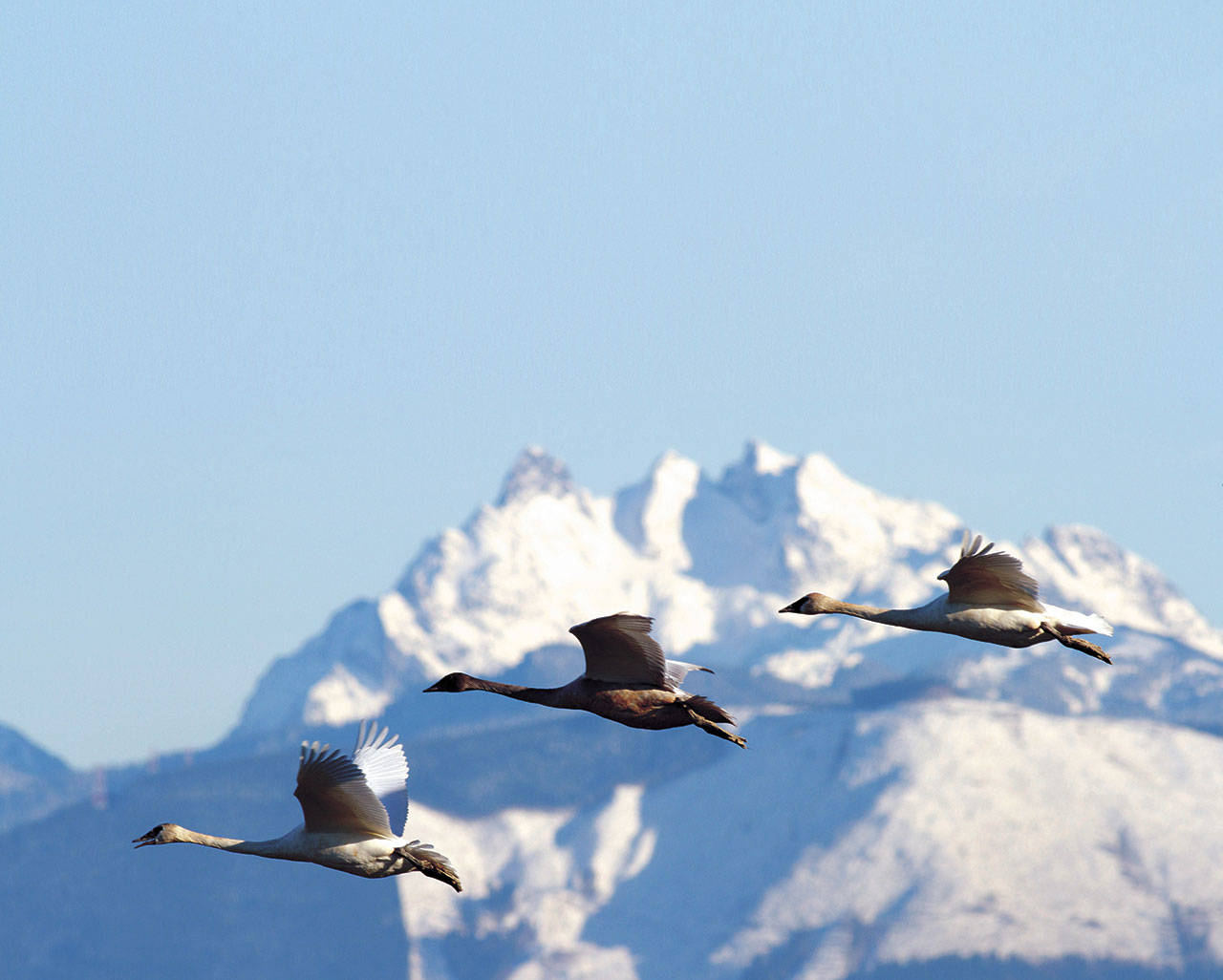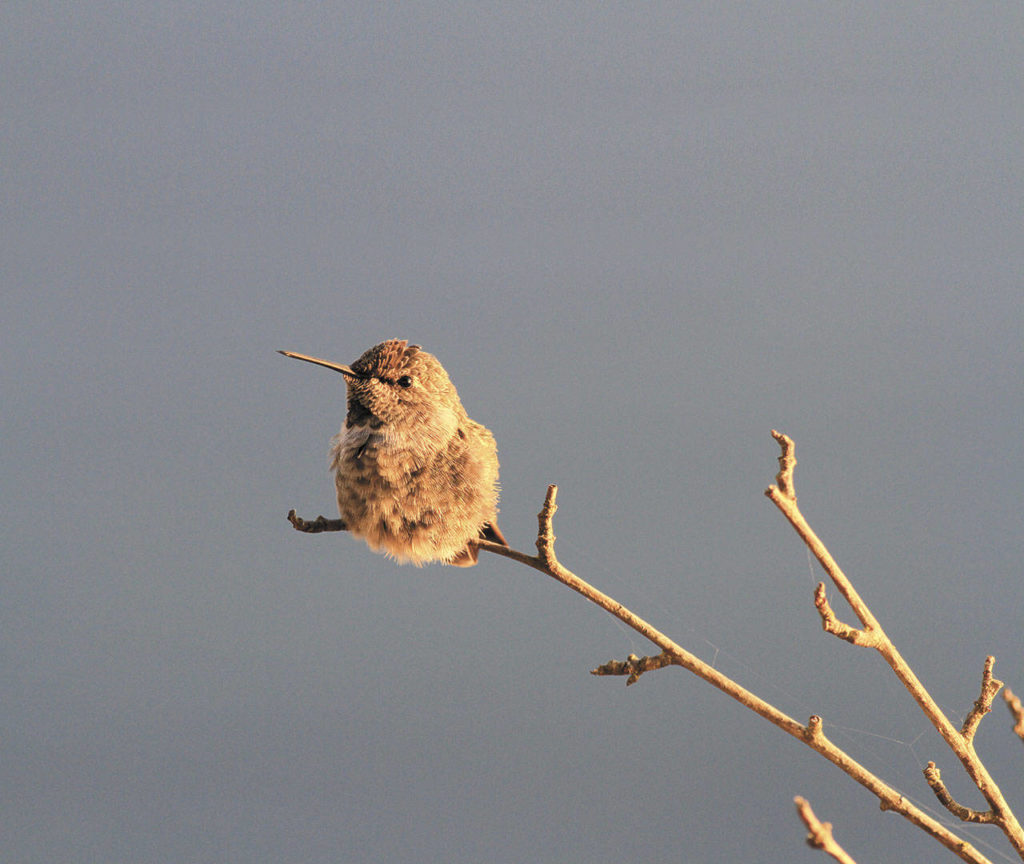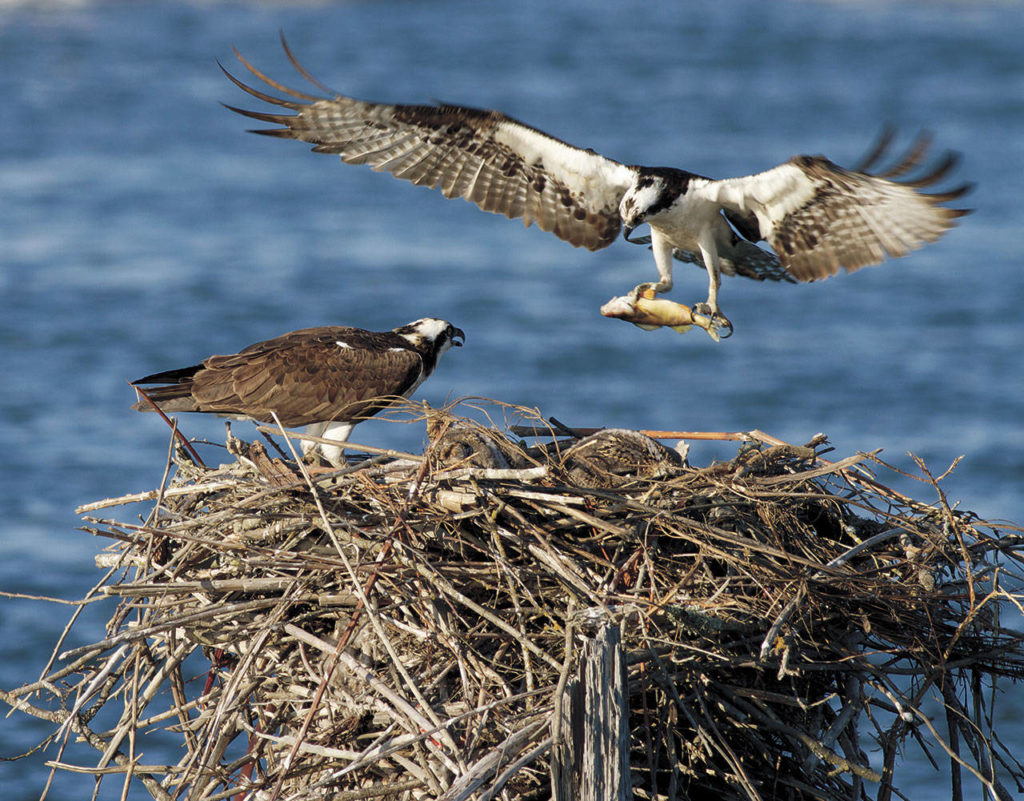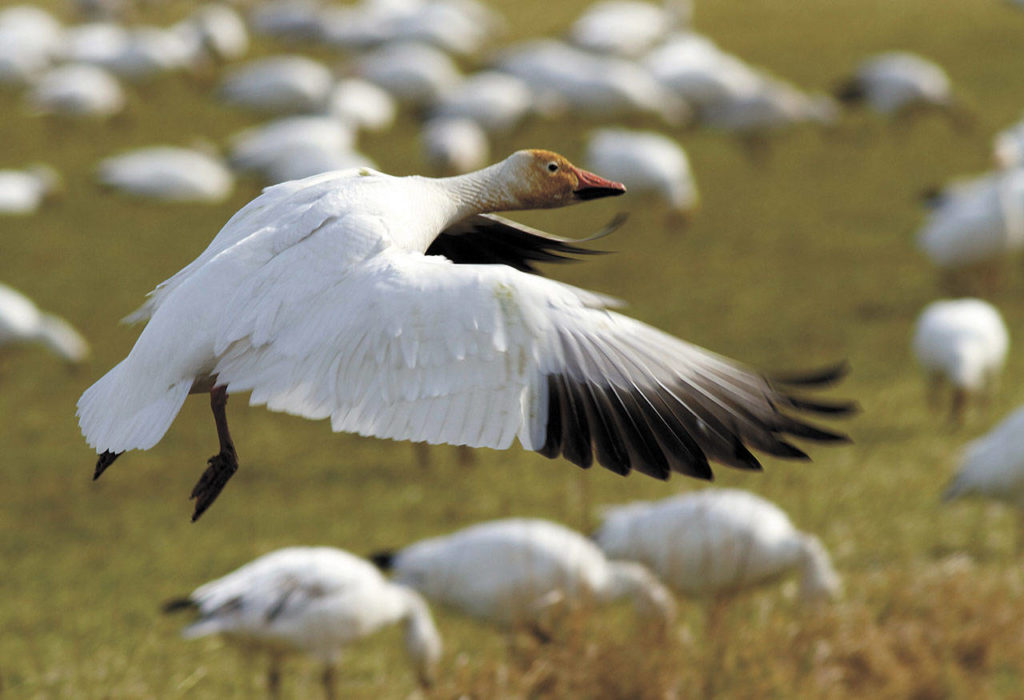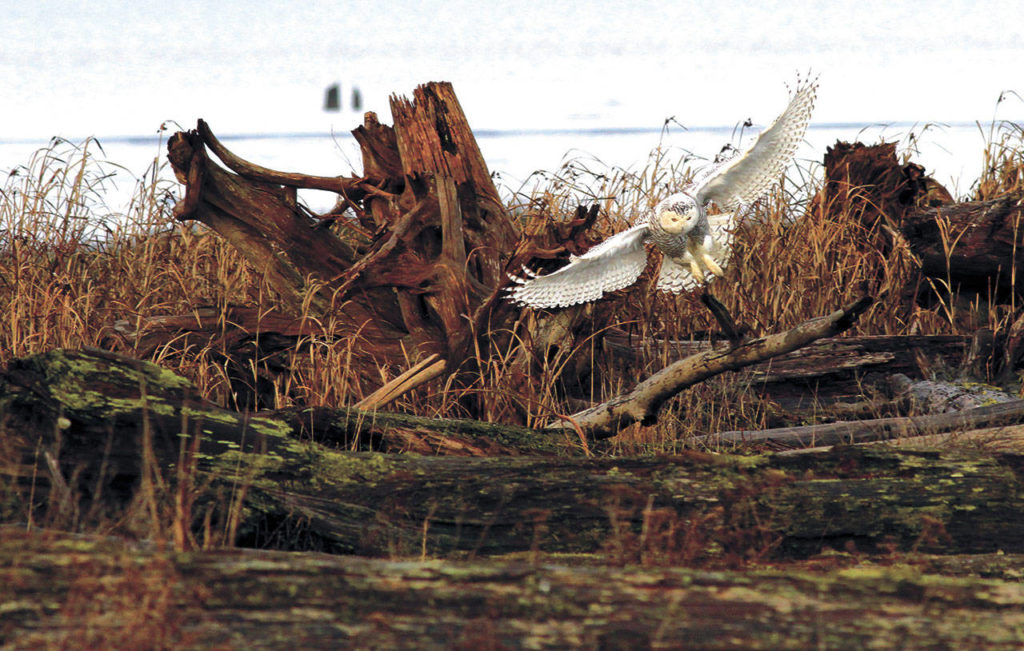Folks who head for Arizona for the winter aren’t the only Northwesterners who migrate.
Many species of Northwest birds head south, too, in search of warmer temperatures and more to eat. Then they fly back north in the spring to raise their young.
Conversely, birds that spend the spring and summer farther north in cooler habitats find Western Washington winters just right.
Here’s a look at five of our feathered friends who migrate to the Everett area for winter, and five more that leave here for warmer weather.
COMINGS
Trumpeter swans
Hunted for meat and feathers for quill pens and ladies’ hats, trumpeter swans were nearly extinct by the late 1800s.
Aggressive conservation efforts revived the swans by the 2000s, and many come from northern Alaska and Canada to winter in the Skagit, Snohomish and Stillaguamish river valleys.
Trumpeters are big birds — the largest waterfowl in North America. They weigh an average of 26 pounds and have a wingspan of about 6 feet. They eat a lot of water plants, but the birds also like to bulk up on corn and potatoes gleaned from farm fields in the Snohomish, Monroe and Arlington areas.
Snow geese
Thousands of snow geese visit Western Washington each winter, coming from Wrangel Island in the remote Russian Arctic in a flight that takes at least a week.
The birds center on Fir Island in Skagit County, but like the swans, they spend a lot their time in farm fields in the Snohomish and Stillaguamish river valleys, feeding on grasses and gleaning unharvested crops.
Large flocks of the birds are often seen in rural areas around Stanwood, Silvana, Camano Island and Mount Vernon from November into May.
Snowy owls
The Arctic owls don’t typically migrate to the Northwest, but they do show up here.
Snowy owls eat a lot of lemmings in their Arctic home, and when lemming populations explode, the owls have a lot more babies. But the adults don’t tolerate competition in their feeding territory, so the babies get kicked out. Many head south to the United States.
During those periods, which happen about every seven years, Washington birders report seeing many young snowy owls spending the winter. They like tundra-like areas that remind them of their home, so some wind up around Port Susan near Stanwood, while others are seen in Bellingham and along Hood Canal.
The last time the owls visited us in force was in 2012, so it could happen again soon.
Bald eagles
Bald eagles live in the Northwest year-round, and their numbers have expanded significantly after officials protected their nesting sites and banned the pesticide DDT, which made their eggs fragile. They’re no longer considered endangered.
In winter, many bald eagles head for the upper Skagit River to feed on chum salmon. The birds can be seen perched in large trees next to waterways, particularly in January and February, when festivals celebrating them take place in Arlington and Skagit County.
Bufflehead
Many ducks live in Snohomish County year-round, but others migrate here for the winter from Canada and Alaska.
Buffleheads, a small sea duck, are among the winter visitors. They spend spring and summer in ponds and lakes in northern forests. In winter, they spend their time around coastal bays and inlets, diving underwater for mollusks and crustaceans.
GOINGS
Osprey
Snohomish County has the largest group of saltwater-based osprey on the West Coast, with dozens of nesting pairs raising their young in the Snohomish River estuary. The birds usually show up in April to repair any damage to their nests caused by winter winds and to evict any unwanted visitors.
Their nests are built of sticks and grass and usually kept for many years. The nests can be quite large: 7 feet wide and 5 feet tall. The females typically lay three eggs and the males gather much of the food for the family. Their diet is nearly entirely fish.
After teaching their young to fly and gather their own food, the osprey typically leave in fall to spend the winter in Mexico or South America.
Hummingbirds
Originally, Anna’s hummingbirds bred only in northern Baja California and Southern California. But ornamental plants in residential gardens farther north on the Pacific coast provided more nectar and nesting sites, allowing the tiny birds to expand their breeding range.
In recent years, a few Anna’s hummingbirds have remained in Western Washington for the winter. That’s why it’s important that those who regularly feed the hummingbirds continue to do so, especially during freezing temperatures.
But not all Anna’s remain in the area, and most other types of hummingbirds fly south for the winter.
Shore birds
Port Susan regularly hosts more than 20,000 shore birds and is classified as an important bird area because of the large numbers that stage, breed or nest there. The bay’s shallow north end is an important stop for migratory shore birds traveling along the Pacific Flyway, which extends from Alaska all the way to Patagonia in South America.
A few of the species stay in the area year-round. One of those are dunlins, long-beaked wading birds that gather in large groups on the mudflats.
Juncos
Juncos pull a bit of a switch in Snohomish County. The small gray sparrows we see in spring and summer typically head south.
But dark-eyed juncos, which live in mountain forest in the spring and summer, typically come down from the hills to enjoy warmer temperatures. If you hear a dark-eyed junco singing, it’s a male. The females do not sing.
Common yellowthroat warbler
The “twichety twichety twichety twich” call of the common yellowthroat is a much-loved sound of spring here.
The yellowthroat, found in local marshes, is a tiny, bright-yellow bird with a black mask that feeds on insects. It migrates to Mexico for the winter.
Washington North Coast Magazine
This article is featured in the winter issue of Washington North Coast Magazine, a supplement of The Daily Herald. Explore Snohomish and Island counties with each quarterly magazine. Each issue is $3.99. Subscribe to receive all four editions for $14 per year. Call 425-339-3200 or go to www.washingtonnorthcoast.com for more information.
Talk to us
> Give us your news tips.
> Send us a letter to the editor.
> More Herald contact information.
